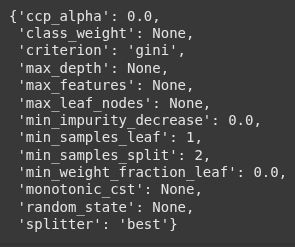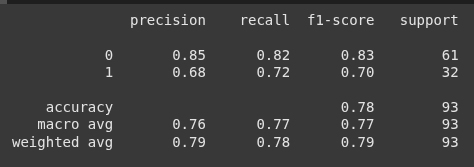Decision Tree
A decision tree is a non-parametric supervised learning algorithm, which is utilized for both classification and regression tasks.
It has hierarchical, tree structure, which consists of a root node, branches, internal nodes and leaf nodes.
note: Parametric supervised learning refers to a type of machine learning where the model assumes a specific functional form and estimates a fixed number of parameters from the training data.
import pandas as pd
we import pandas as pd, thne we read the csv file called ‘500hits.csv’
df = pd.read_csv('500hits.csv' , encoding='latin-1')
df.head()

next we drop the columns ‘Players and ‘cs’
df = df.drop(columns = ['PLAYER', 'CS'])
Here we select all rows and columns 0 through 12 (not including 13) and assign it to X
X = df.iloc[:, 0:13]
Here we select all rows : from column index 13, and assign it to y
y = df.iloc[:,13]
Next we import train_test_split from sklearn.model_selection
from sklearn.model_selection import train_test_split
Then we split the data into testing and train sets.
X_train, X_test, y_train, y_test = train_test_split(X, y, random_state=17, test_size=0.2)
Next we check the snape or dimension of the data, .shape returns (rows, columns)
X_train.shape
X_test.shape
Next we import DecisionTreeClassifier
from sklearn.tree import DecisionTreeClassifier and assign it to the variable "dtc"
dtc = DecisionTreeClassifier()
dtc.get_params()

Next we train the model on our data using the .fit()
dtc.fit(X_train, y_train)

Next after traing we predict, i.e we evaluate our models performance using the test data.
y_pred = dtc.predict(X_test)
Here, we import the confusion_matrix function from scikit-learn.
It is used to evaluate classification models by comparing the predicted labels with the actual labels.
from sklearn.metrics import confusion_matrix
print(confusion_matrix(y_test, y_pred))

from sklearn.metrics import classification_report
print(classification_report(y_test, y_pred))

Here we return an array of numbers showing how important each feature was in buiding the decision tree “dtc”
dtc.feature_importances_

features = pd.DataFrame(dtc.feature_importances_, index = X.columns)
features.head(15)

Higher values of ccp_alpha lead to more pruning in the decision tree.
This is part of cost-complexity pruning, which removes less important branches to help prevent overfitting.
ccp_alpha(Cost Complexity Pruning Alpha) is a parameter that controls how much the tree should be simplified.
dtc2 = DecisionTreeClassifier(criterion='entropy', ccp_alpha= 0.04)
SO next after adding the ccp_alpha, we train, test and evaluate again to see if theres improvement.
dtc2.fit(X_train, y_train)

y_pred2 = dtc2.predict(X_test)
print(confusion_matrix(y_test, y_pred2))

print(classification_report(y_test, y_pred2))

features2 = pd.DataFrame(dtc2.feature_importances_, index = X.columns)
features2.head(15)

Ryan is a Data Scientist at a fintech company, where he focuses on fraud prevention in underwriting and risk. Before that, he worked as a Data Analyst at a tax software company. He holds a degree in Electrical Engineering from UCF.
